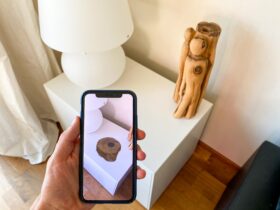Menstrual cups are safe to use when used as recommended. Keep in mind that any product used for menstrual hygiene presents a certain level of risk. Therefore, menstrual cups are no more dangerous than tampons. However, it is up to you to find the most comfortable method.
Potential risks
Wearing the wrong cup size could cause complications, but the most common is irritation. Let’s dive deeper into some of the potential risks. Knowing them can help you minimize or prevent the risks.
Irritation
To avoid irritation, follow the manufacturer’s recommendations. This issue can be avoided most of the time if you use the right amount of lubricant before inserting the cup.
Using the wrong size can also create discomfort, and so is bad hygiene. You need to make sure the reusable cup is correctly cleaned between uses.

Infection
The menstrual cup does not cause infections. Infections are a rarity and when they occur is usually due to bacteria. To minimize the risks, wash your hands properly with antibacterial soap. Also, ensure the proper cleaning of the cup.
For that, you can use warm water and water-based soap (fragrance-free).
Toxic Shock Syndrome (TSS)
This complication is very rare, and it occurs due to a bacteria infection. The bacteria is called Staphylococcus, and it exists naturally in our body. However, when wearing a tampon for too long or with a higher absorbency than your body requires, is when TSS complications appear.
You can lower the risk of TSS by maintaining proper hygiene.
Urinary issues
Using this product can irritate the urethra. However, the issue is caused by the wrong position of the cup. This can be sorted out quickly, and with time you’ll get used to finding the right spot.
Another risk is making way for bacteria to enter the urinary tract. Some people had problems urinating due to the cup; however, the risk is shallow.
Rashes and allergic reactions
Sometimes using a particular brand could cause rashes or allergic reactions. However, it depends on the materials used to make the menstrual product. There are many brands on the market, so I suggest trying a couple to see which one works for you.
Menstrual cups vs Tampons
Menstrual cups are more affordable than tampons as you can reuse them instead of restocking them. In terms of safeness, tampons present the same risks as cups.
However, using menstrual cups can be more of a challenge, but that’s something you learn with time. Practice makes things perfect.

A menstrual cup can be used up to 12 hours max, but sometimes, depending on the flow, you might have to replace or clean the cup after 6 or 4 hours. Although it might not be the best idea, you can still have sex while wearing the cup. However, it might be uncomfortable for both partners.
Menstrual cup contraindications
Although there are no contraindications, if you have a condition you are aware of, it might be worth talking to your doctor before using the cup. For example, vaginismus is when your muscles tighten up on their own due to fear of penetration.
Keep in mind having those conditions doesn’t necessarily mean you are not allowed to use the cups, but be aware it could create a certain level of discomfort.
How to pick the size?
There are only two sizes: small and large. The most common rim size of the small cup is 35mm to 43mm, while the large is 43mm to 48mm. If you are a virgin or are used to using tampons, I recommend the small cup. However, if you naturally gave birth, the large size should work better for you.























Leave a Reply